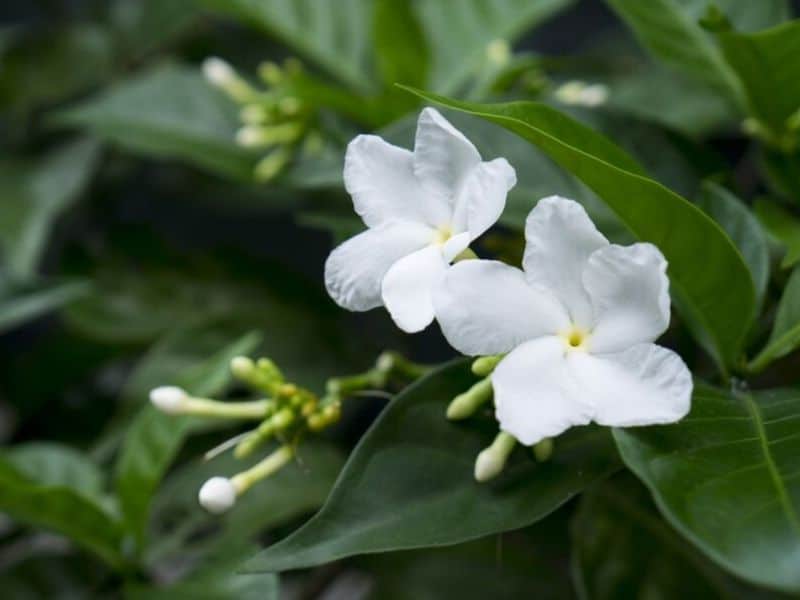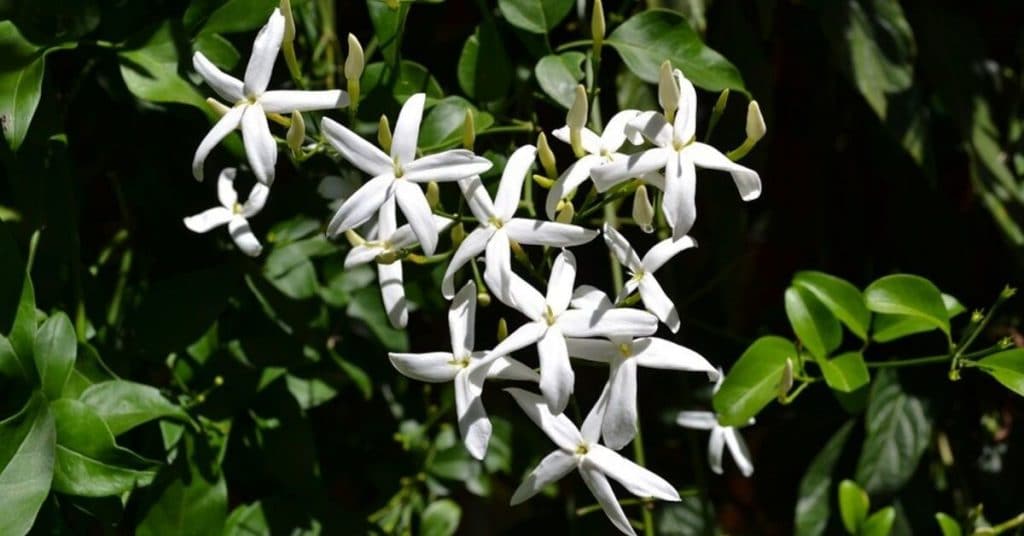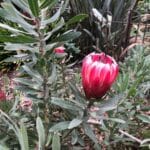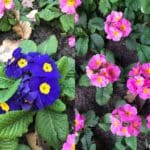One cannot simply come across a jasmine flower and not take a moment to catch a whiff of its sweet floral fragrance. It seems impossible that such a small flower can exude such a strong, fragrant smell.
From teapots to flowerpots, with its beautiful, sweet flowers, and its many beneficial uses, jasmine is definitely a flower worth having in a garden.
Jasmine Origin
Jasmine or Jessamine in Arabic literally means “Gift from God”. It is the common name for plant species under the genus Jasminum from the Olive family (Oleaceae). This family consists of a wide group of plants with 29 genera and 600 species, all are known for their oils which are utilized in various industries.
The genus Jasminum houses more than 200 plant species of which 50 species are cultivated (2).
They are one of the oldest cultivated ornamental plants appearing in old texts and mural paintings as late as 250 B.C. Jasmine is said to have originated from the Himalayas region where they are utilized by indigenous people for culinary and traditional practices.
In China, jasmine tea is prepared by mixing jasmine flowers with tea leaves to add aroma. Garlands made of jasmine flowers are a favorite offering and adornment in altars in some Asian countries.
Jasmine is even considered as the national flower of some countries such as Indonesia, Pakistan, and the Philippines (1).

Jasmine As An Ornamental Plant
Although nowadays they are widespread across the world, jasmines are native to the tropics and subtropics. Many species of jasmine are quite hardy which is why they are favored by horticulturists and hobbyists alike. Jasmines are deciduous shrubs, but some varieties are climbers.
Common jasmine species are Spanish Jasmine (J. grandiflorum), Arabic Jasmine (J. sambac) Common Jasmine (J. officinale), Italian Jasmine (J. humile), Angelwing Jasmine (J. nitidum), King Jasmine (J. rex), and Winter Jasmine (J. nudiflorum) (1).
Arabian Jasmine and Common Jasmine have many cultivars that varies among each other based on their leaves and flowers. Popular Arabian Jasmine cultivars include the Maid of Orleans, Grand Duke of Tuskany, and Dundamali while the popular ones for the Common Jasmine are Devon Cream, Crug’s Collection, and Frojas (3).
The leaves differ in shape and size, with a lush green color that may be waxy or velvety. The flowers are almost exclusively white with exceptions of some colored species such as the Winter Jasmine. The fragrant flowers bloom in clusters and may be simple, one-layered flowers or grand, multiple-layered flowers resembling a rose.
Jasmine blossoms have a sweet floral scent, with the flower buds having a stronger fragrance. Some varieties, though, lack this signature fragrance such as the Winter Jasmine but they make up for it with their beautiful yellow flowers (2).
Another treasured cultivar of jasmine is the pink flowered Jasminum x staphense, a hybrid of the Common Jasmine with the Red Jasmine (J. beesianum) (1).
Jasmine As A Medicinal Plant
Jasmine plants are used by many Asian countries for their folkloric or traditional medicines. The flowers are very popular for their use in aromatherapy. In traditional Chinese medicine, jasmine flowers are used as an antispasmodic and as an ingredient to treat lymphoma and hepatitis.
In Hindu medicine, the leaves of Spanish Jasmine are used as a remedy for skin diseases (4).
The flowers are also used in Ayurveda to heal wounds, and as an aphrodisiac. Some wild varieties of jasmine are even reported to have potential antibacterial, antifungal, anti-inflammatory, and anti-cancer properties (5).
Aside from the medical industry, the cosmetic industry also benefits greatly from jasmines (6).
Jasmine essential oils extracted from jasmine flowers are used as a base note in perfumery, and to add scent in various cosmetic products. Harvesting jasmine oil requires a lot of flowers to be used. In fact, eight thousand flowers will only yield one gram of jasmine oil. That is equal to only about 25 drops of oil (1)!
How To Grow Jasmine
Growing jasmine flowers can be a rewarding experience, as these beautiful blooms not only add fragrance to your garden but also bring a touch of elegance to any space. Here’s a comprehensive guide on how to grow jasmine flowers successfully.
Before you start growing jasmine, it’s important to choose the right types of jasmine for your climate and space. Some popular varieties include Jasminum officinale (common jasmine), Jasminum sambac (Arabian jasmine), and Jasminum polyanthum (pink jasmine). Consider factors such as climate, space availability, and intended use (jasmine plant indoors or outdoors) when selecting a variety.
Soil
Jasmine plants thrive in well-draining soil with a slightly acidic to neutral pH level (around 6.0 to 7.0). A mixture of loamy soil enriched with organic matter such as compost or well-rotted manure works well for jasmine. Ensure good drainage to prevent waterlogging, which can lead to root rot.
Water
- Outdoor Jasmine: Water regularly, especially during hot weather, allowing the top inch of soil to dry before watering again. Avoid overwatering.
- Indoor Jasmine: Water moderately, keeping the soil evenly moist but not soggy. Water deeply when the top inch of soil feels dry.
Sunlight
Jasmine plants prefer full sunlight for at least 4 to 6 hours a day. Place them in a location where they can receive ample bright light, especially in the morning hours. However, they can tolerate partial shade, particularly in hot climates.
Fertilizer
Feed jasmine plants with a balanced, slow-release fertilizer formulated for flowering plants. Apply the fertilizer during the growing season, typically in early spring and summer, following the instructions on the product label.
Avoid over-fertilizing, as excessive nutrients can lead to lush foliage growth at the expense of fragrant white flowers.
Pruning
Regular pruning is beneficial for jasmine plants to maintain their shape, promote bushy growth, and encourage flower production. Prune plants after flowering to remove spent blooms and shape the plant as desired. Avoid heavy pruning, especially during the fall and winter months, as this can reduce flower production.
Pets and Diseases
Jasmine is generally resistant to pests and diseases, but watch out for aphids, spider mites, mealybugs, and fungal issues. Address them promptly with organic methods whenever possible.
Propagate Jasmine Plant
You can propagate jasmine plants through stem cuttings taken from healthy, mature plants. Dip the cuttings in rooting hormone and plant them in well-draining potting mix. Keep the soil moist and provide bottom heat to encourage root growth. Once rooted, transplant the cuttings into individual pots or directly into the garden.
FAQs
How do you keep jasmine blooming?
To keep jasmine blooming, ensure it receives ample sunlight, at least 4-6 hours daily, and provide consistent watering and fertilization during the growing season. Regular pruning to remove spent flowers encourages continuous blooming throughout the flowering season.
Does jasmine need direct sunlight?
Jasmine thrives in direct sunlight but can tolerate some shade. However, to encourage prolific blooming, it’s best to provide jasmine with ample sunlight, ideally at least 4-6 hours of direct sunlight daily.
How long do jasmine flowers last?
The duration of jasmine flowers varies depending on the species and environmental conditions. Typically, jasmine flowers last for a few days to a week before fading and dropping from the plant.
Why do jasmine flowers fall off so quickly?
Several factors can cause jasmine flowers to fall off quickly, including environmental stressors like fluctuating temperatures, inadequate sunlight or water, nutrient deficiencies, or pests and diseases. Ensuring optimal growing jasmine plant conditions and proper care can help minimize premature flower drop.
Should I remove dead jasmine flowers?
Yes, it’s advisable to remove dead jasmine flowers promptly. Deadheading spent blooms not only improves the plant’s appearance but also redirects its energy towards producing new flowers, prolonging the blooming period.
Final thoughts
In conclusion, growing jasmine flowers requires attention to soil, water, sunlight, fertilizer, humidity, and pest management. By providing the right jasmine plant care, you can enjoy the beauty and fragrance of jasmine blooms in your garden or indoor space.
Up Next: Jasmine Flower Meaning and Symbolism
References
(1) Cumo C.M. 2013. Encyclopedia of Cultivated Plants: From Acacia to Zinnia. ABC-CLIO, USA. pp. 535-538.
(2) eFloras (2008). Published on the Internet; http://www.efloras.org [accessed 23 September 2019]
(3) Joshi H. Jasmines. 2019. AGROHORTICO, Gardening. pp. 3-22.
(4) Khidzir K.M. Cheng S.F. Chuah C.H. 2015. Interspecies variation of chemical constituents and antioxidant capacity of extracts from Jasminum sambac and Jasminum multiflorum grown in Malaysia. Industrial Crops and Products. Vol. 74. pp. 635-641.
(5) Padmaa. M. Paarakh. 2009. Antibacterial activity of Jasminum grandiflorum Linn leaves. JPR: BioMedRx: An International Journal, Vol 2, No 7.
(6) Panda H. Cultivation and Utilization of Aromatic Plants. 2005. Asia Pacific Business Press Inc. pp. 221-239.
Close
Photo credit: watsilchum/pixabay.com







